I’ve eaten cassava products all my life but I’d never tasted the cooked/ boiled tuber till last weekend. It is an interesting combination of starchy and chewy and a taste that isn’t as distinctive as I expected.
What it looks like
Think long tubers, about 20 – 30cm with tough brown skins bearing some resemblance to yams but for the pointed carrot-like tips.
How to select
Select tubers that are brown all over, without many scaly patches.
The photo above shows a fresh tuber. That below? Not-so-fresh tubers. See how the protective skin on the tubers has come off?
Peeling & Preparation
Peel as you would any other tuber with a vegetable peeler or a paring knife. I went with veggie peeler.
Raw cassava is not safe for consumption because it has cyanide in raw form. It must be cooked for all preparations.
Most of the tubers in this batch had purple streaks running through them – past their prime :(. Fresh cassava tubers should be white when you slice through.
The interesting thing for me was the discovery of a thick cord running through the centre.
You can remove it before or after cooking.
To cook, slice or cut into chunks or chips.
How to cook
There are a multitude of ways to cook cassava but I opted for boiled. I wanted to understand the texture.
It took about forty minutes to get the cassava chunks soft.
The texture and flavour remind me very much of starchier, chewier ‘not-as-sweet’ sweet potatoes.
Soon, I’ll share what I made with my boiled cassava.
Stay well and read Food52.com’s piece on cassava for more.
How do you cook and eat your fresh cassava?[wpurp-searchable-recipe]The Anatomy of Cassava – – – [/wpurp-searchable-recipe]

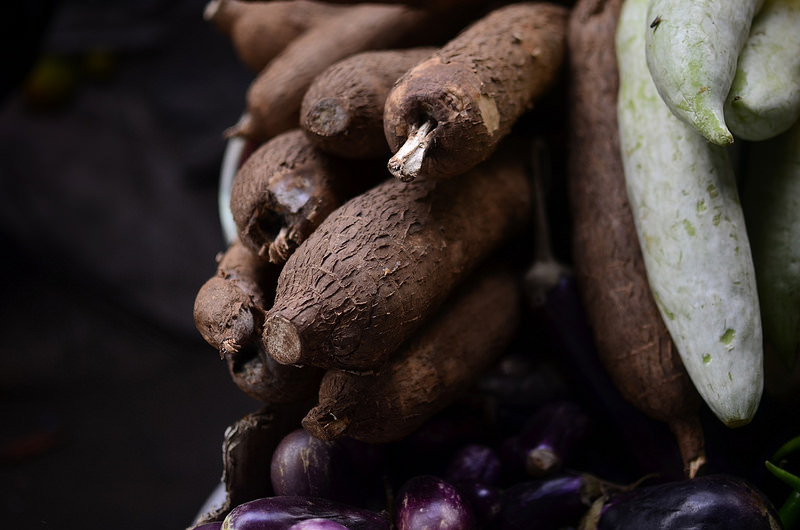

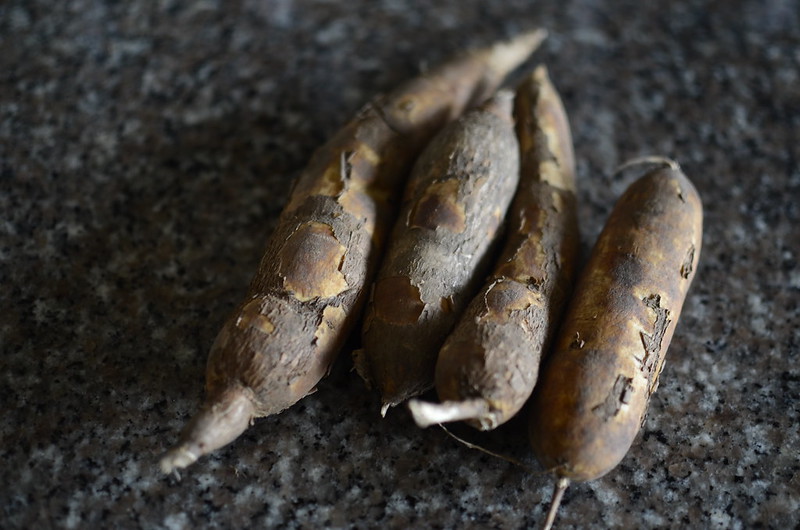
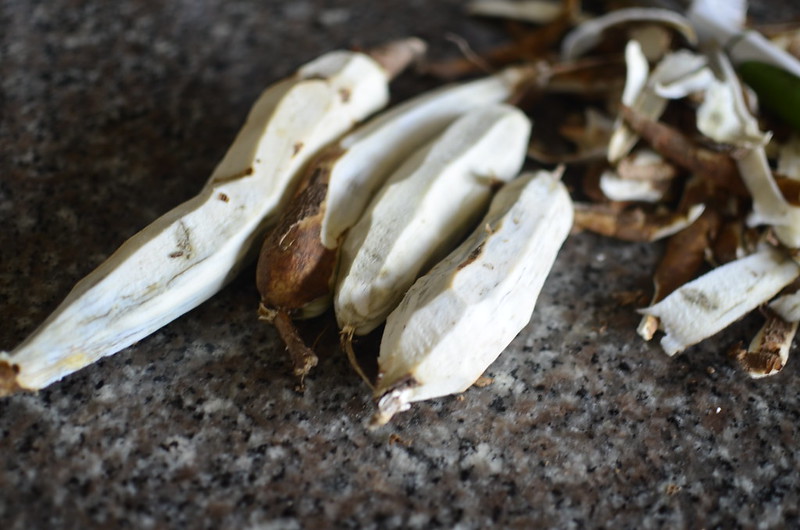
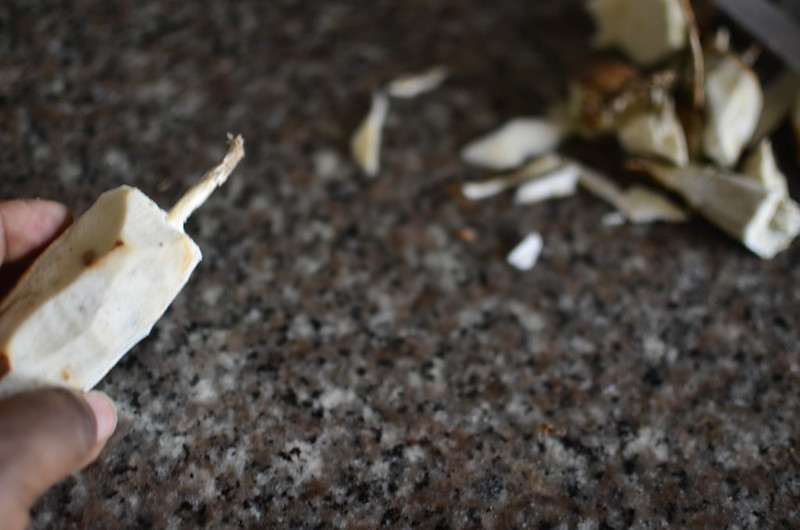

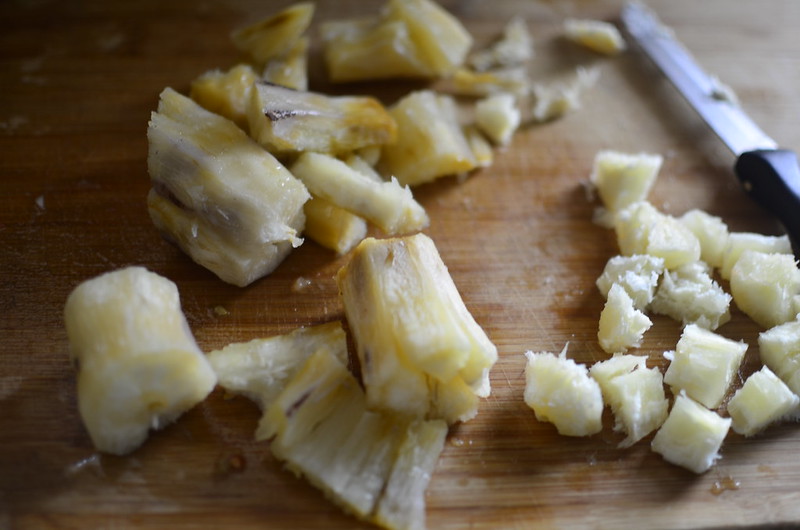

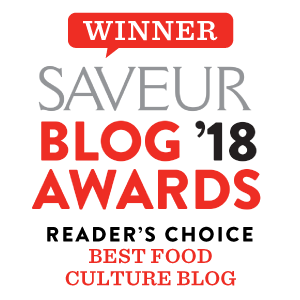
Hi Oz,
In my secondary school, i remember how we used to beg the day girls to help us buy cooked cassava from the school gate. It was called ‘Rogo’ then, I think thats the Hausa name for cassava. This rogo was sold in newspapers with yaji sprinkled on it and if you are lucky to have extra cash, you may opt to buy fried fish as a side. It tasted heavenly.
I for one have never cooked cassava to eat before despite my past time in secondary school but I have had the experience to understand how it is being processed to Fufu. This was my grandma’s business, right from negotiations in buying a truckful load of cassava, then hiring the peelers, soaking the cassava’s to ferment, grating them back into clean water using an iron mesh and extracting the output into sacks before they are being water pressed and brought into Lagos for sale…
Sometimes, I love the way you throw my childhood memories back at me!
Sounds delish. I’m definitely going to get my yaji out…and try it again. And I love how it was a special thing in school – nice.
And that you know the entire value chain/ process from watching Grandma. Isn’t it so interesting how much we learnt without really knowing 🙂